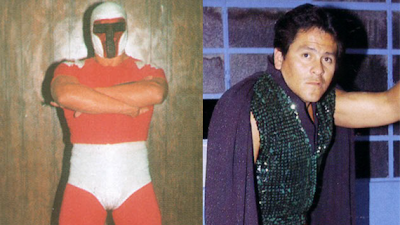Eiko Ishioka was a Japanese art director, costume and graphic designer known for her work in stage, screen, advertising and print media pancreatic cancer she was 72..[1][2] Noted for her advertising campaigns for the Japanese boutique chain Parco, she designed uniforms and outerwear for members of the Swiss, Canadian, Japanese and Spanish teams at the 2002 Winter Olympics in Salt Lake City and was the director of costume design for the opening ceremony of the 2008 Summer Olympics in Beijing.[3] She won the Academy Award for Best Costume Design for her work in Francis Ford Coppola's 1992 film Bram Stoker’s Dracula and was posthumously nominated for an Academy Award in the same category for her work in Tarsem Singh’s 2012 film Mirror Mirror.[4]
In 2003 she designed the logo for the Houston Rockets.[8][9]
She has also done costume design for theater and circus. In 1999 she designed costumes for Richard Wagner’s Der Ring des Nibelungen at the Dutch Opera. She designed costumes for Cirque du Soleil: Varekai, which premiered in 2002 as well as for Julie Taymor's Broadway musical Spider-Man: Turn Off the Dark, which premiered in 2011. She also directed the music video for Björk's "Cocoon" in 2002 and designed costumes for the "Hurricane" tour of singer Grace Jones in 2009.[12]
Ishioka's work is included in the permanent collection of museums throughout the world, including the Museum of Modern Art in New York.
To see more of who died in 2011 click here
(石岡 瑛子 Ishioka Eiko, July 12, 1938 – January 21, 2012)
Life and career
Ishioka was born in Tokyo to a commercial graphic designer father and a housewife mother. Although her father encouraged her interest in art as a child, he discouraged her ambition to follow him into the business.[5] She graduated from the Tokyo National University of Fine Arts and Music.[6]Advertising career
Eiko began her career with the advertising division of the cosmetics company Shiseido in 1961 and won Japan’s most prestigious advertising award four years later. Eiko was discovered by Tsuji Masuda who created Parco Ikebukuro from the ailing Marubutsu Department Store. When Parco did well and expanded to a Shibuya location in 1973, Eiko designed Parco Shibuya's first 15 second commercial for the grand opening with "a tall, thin black woman, dressed in a black bikini, dancing with a very small man in a Santa Claus outfit". She became deeply involved in Parco's image. Her last Parco campaign involved Faye Dunaway as "face of Parco" wearing black, on a black chair against a black wall, and peeling and eating an egg in one minute as "a film for Parco."[7] She became its chief art director in 1971 and her work there is noted for several campaigns featuring Faye Dunaway and for its open and surreal eroticism. In 1983 she ended her association with Parco and opened her own design firm.In 2003 she designed the logo for the Houston Rockets.[8][9]
Film career
In 1985 director Paul Schrader chose her to be the production designer for his 1985 film Mishima: A Life in Four Chapters. Her work went on to win her a special award for artistic contribution at the Cannes Film Festival that year. Eiko's work with Francis Ford Coppola on the poster for the Japanese release of Apocalypse Now led to their later collaboration in Coppola's Dracula which fetched Eiko her first Academy Award.[10] She has also worked on four of Tarsem Singh's films beginning with the Jennifer Lopez starrer The Cell in 2000 and including The Fall, Immortals and the Oscar nominated Mirror Mirror.[11]She has also done costume design for theater and circus. In 1999 she designed costumes for Richard Wagner’s Der Ring des Nibelungen at the Dutch Opera. She designed costumes for Cirque du Soleil: Varekai, which premiered in 2002 as well as for Julie Taymor's Broadway musical Spider-Man: Turn Off the Dark, which premiered in 2011. She also directed the music video for Björk's "Cocoon" in 2002 and designed costumes for the "Hurricane" tour of singer Grace Jones in 2009.[12]
Ishioka's work is included in the permanent collection of museums throughout the world, including the Museum of Modern Art in New York.
Awards
Eiko won a Grammy Award for her artwork for Miles Davis' album Tutu in 1987 and an Academy Award for Best Costume Design for Bram Stoker's Dracula in 1992. She also received two Tony Award nominations in 1988 for the stage and costume design of the Broadway play M. Butterfly and, in 2012, received an Academy Award for Best Costume Design nomination for Mirror Mirror.[13] In 1992 she was selected to be a member of the New York Art Directors Club Hall of Fame.Filmography
- Mishima: A Life in Four Chapters (1985)
- Closet Land (1991)
- Bram Stoker's Dracula (1992)
- The Cell (2000)
- The Fall (2006)
- Theresa: The Body of Christ (2007)
- Immortals (2011)
- Mirror Mirror (2012)
Books
The 1990 book Eiko by Eiko collects her work in art direction and graphic design.[14] A second book, Eiko on Stage, followed in 2000.[15]Death
Ishioka died of pancreatic cancer in Tokyo, Japan on January 21, 2012.[16] She married her companion Nicholas Soultanakis in hospital a few months before her death.[17]To see more of who died in 2011 click here









